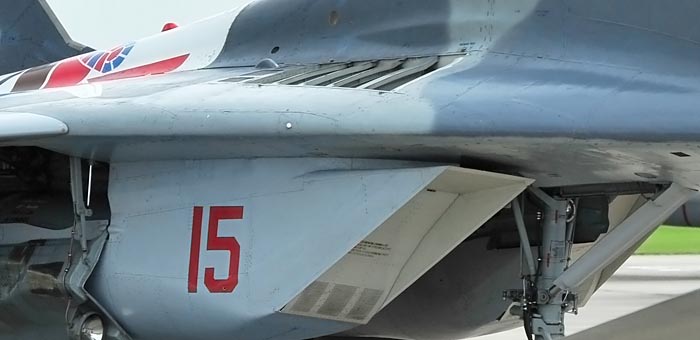Just to roll around on "unimproved" airfields (grass/dirt/gravel strips), the biggest thing planes need is simply a decent set of tires:

This MiG-29UN trainer shows off the fairly beefy main tires put on these planes specifically to allow them to more easily roll over minor imperfections in the runway/taxiway surface, including dirt/gravel/grass strips (though here it's landing on a traditional asphalt/concrete surface). Compare these to the relatively small gear wheels and low-aspect rubber on the similarly-sized F-16:

(source: f-16.net)
Now, your question oversimplifies things, because "foreign object debris" or FOD is in fact a primary danger of unpaved airstrips for jets, and this danger has to be accounted for in the design. Here's the main reason the MiG-29 can take off from dirt:


MiG-29s and similarly-minded Su-27s, and their variants, have special doors to close off the lower intakes normally used in flight, instead drawing in air through the gill-like ports over the top of the wing strakes. This prevents the engine from ingesting dust, rocks, birds, rodents, etc on takeoff and landing.
This engine protection system, while effective, adds mechanical complexity and weight which U.S. designers and military brass have generally thought unnecessary given that requirements rarely include the ability to operate from unimproved strips. Most U.S. fighters in the jet age, therefore, have had to operate from airbases with some form of paved runway surface (and the U.S. military actually has higher standards for runway surface quality than most international airports). The U.S. arsenal does, however, have several aircraft that are specifically designed to operate from rudimentary airstrips at forward bases. These designs avoid FOD damage primarily by keeping the engines up as high as the design will allow. For instance, the A-10's two engines are on pods angled up on the fuselage between the wings and tail for a variety of reasons including FOD avoidance:

Most of the other designs in the Western arsenal that can do this are high-wing designs with wing-mounted engines, which keep them out of the dust produced by takeoff and landing in a similar fashion. Here are a C-130 and C-17 landing at an Afghanistan forward base:


The Harrier is a notable exception to this general strategy by Western designers of just keeping the engines out of any debris cloud. While it's probably not done routinely, a Harrier can set down just about anywhere, and as this picture shows, it ingests no small amount of dust in the process:





















